Industrial hydraulic motors, sometimes called hydraulic fluid motors, are motors that use the concept of hydraulics in order to generate a force that can be used to power numerous applications. The study of hydraulics says that, because most fluids are incompressible, if a fluid is placed inside a closed system and then force is applied to it, at some point, this force will move through it to another point. Read More…
It is our goal that we are able to maintain our position as one of the leading producers and manufacturers of hydraulic motors and that we may provide our products to an ever growing customer base worldwide! We were founded in 1941 and we wish to put all of those years of experience to work for you! To receive more information about how we may be able to benefit you; get in touch with our...
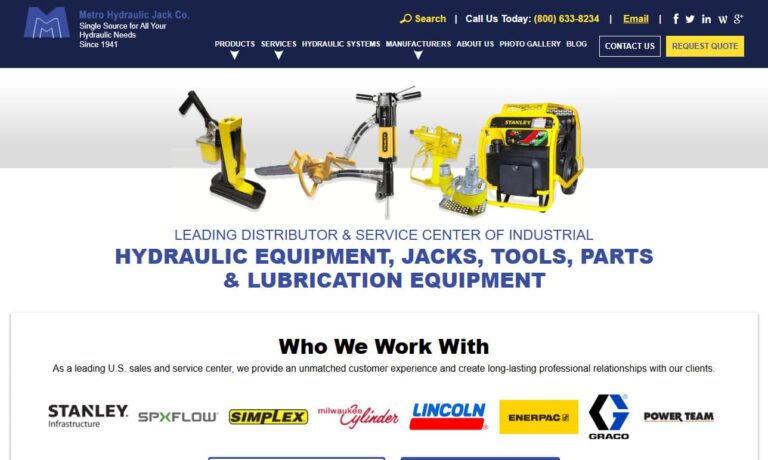
At Hyseco Inc., we specialize in providing high-quality hydraulic motors and related solutions designed to meet the diverse needs of industries that demand reliable, efficient power. Our extensive experience allows us to offer a range of hydraulic motors that deliver optimal performance, whether in demanding industrial applications or precision-driven processes.

Hader Industries is a manufacturer of hydraulic components. We custom-engineer hydraulic cylinders, valves and accumulators for mobile equipment. We have been servicing various industries for over 70 years. If you have any questions about our products or services then please give us a call today to learn more!
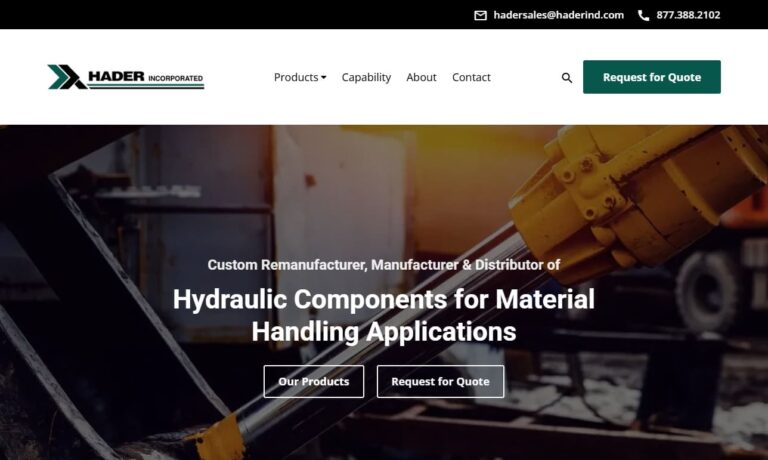
At International Fluid Power of America, we specialize in delivering innovative hydraulic solutions to meet the diverse needs of our clients. With a deep-rooted expertise in hydraulic systems, we focus on providing high-quality hydraulic motors that power industries across various sectors, including manufacturing, agriculture, construction, and more. Our hydraulic motors are engineered to deliver ...

More Hydraulic Motor Manufacturers
Hydraulic motors are advanced mechanical actuators that convert pressurized hydraulic fluid into rotational energy and torque, making them a vital component in modern engineering and industrial automation. Serving as the rotary counterpart to hydraulic cylinders, hydraulic motors—sometimes referred to as hydraulic drive motors—are indispensable across a diverse range of industries. Their robust design and ability to deliver high-pressure, high-torque output have made them essential in sectors such as construction, automotive manufacturing, agriculture, forestry, industrial manufacturing, military and defense, waste management, recycling, aerospace, marine operations, and the oil and energy industry. They provide the reliable power required in scenarios where traditional electric motors might fall short due to power, torque, or environmental constraints.
Do you need hydraulic power solutions for heavy-duty tasks? Understanding the right hydraulic motor for your application can be the key to maximizing efficiency and longevity in your equipment. Hydraulic motors are commonly used in high-performance settings, such as raising airplane wing flaps, powering industrial cranes, or driving conveyor belts in material handling systems. Their versatility extends to agitator and mixer drives, self-propelled cranes, drilling rigs, off-road vehicles, drum drives for industrial digesters, commercial-grade lawn trimmers, military vehicle propulsion, waste shredders, trench cutters, trommels, rotary kilns, excavators, marine winches, and plastic injection molding machines. This broad spectrum of use cases highlights their adaptability and the critical role they play in modern hydraulics and fluid power systems.
History of Hydraulic Motors
The evolution of hydraulic motors is closely tied to the progress of industrial automation and the development of fluid power technology. William Armstrong, an innovator during the Industrial Revolution, laid the groundwork for hydraulic engineering with his invention of a water-driven rotary engine. Although initially underutilized, Armstrong’s engine became a crucial prototype for future rotary actuators. His most notable achievements include the design of the hydraulic motor for the Swing Bridge over the River Tyne, which featured a three-cylinder, single-action engine capable of oscillating movement—an early precursor to today’s modern hydraulic rotary actuators.
Despite their ingenuity, Armstrong’s early designs were hindered by fixed strokes and non-adjustable valves, leading to inefficiencies such as constant water consumption regardless of load. This prompted further innovation by engineers like Arthur Rigg, who addressed these flaws by developing variable stroke hydraulic motors. In 1886, Rigg patented a three-cylinder radial engine with a double eccentric mechanism for adjustable stroke length, significantly improving efficiency and operator control. These advancements set the stage for the widespread adoption of hydraulic power in applications such as cranes, bridges, kilns, hydraulic lifts, and metalworking machinery. Over the decades, continuous improvements in hydraulic system design, reliability, and energy efficiency have made hydraulic motors a cornerstone of modern industry.
Hydraulic Motor Design
Manufacturers engineer hydraulic motor components using high-strength metals—including steel, iron, and specialized alloys—to withstand the demanding operational environments of high-speed, high-pressure fluid systems. When evaluating hydraulic motor design, it is crucial to consider the integration of relief valves, fluid reservoirs, and hydraulic pumps, ensuring that each element is rated for strength, capacity, and compatibility with the hydraulic fluid and system pressures used.
Are you trying to determine the right hydraulic motor specifications for your application? Selecting the proper hydraulic fluid is just as important as the mechanical design: the fluid must be chemically stable, compatible with all internal components, and provide effective lubrication to minimize wear. Customizable design factors include starting, output, breakaway, and running torque; motor size and displacement; shaft and piston configuration; maximum fluid pressure tolerance; speed range; and resistance rating for harsh environments.
Modern hydraulic motors are also available in compact, modular, and explosion-proof designs for use in hazardous or space-constrained locations. Sealing technology, bearing selection, and surface treatments further enhance durability, extending service life and reducing maintenance requirements. As you evaluate hydraulic motor design options, consult with suppliers about custom configurations to meet unique project needs, such as extreme temperature resistance, underwater operation, or integration with smart sensors for predictive maintenance.
Features of Hydraulic Motors
Hydraulic motors are built for reliability, efficiency, and flexibility. Key features include precision-machined enclosures to withstand high speeds and pressure, advanced sealing systems for leak prevention, and robust internal components designed for continuous operation. Relief valves protect against pressure spikes, while well-designed fluid reservoirs and pumps ensure smooth, consistent flow and efficient energy transfer. The choice of high-quality hydraulic fluid is vital to ensure chemical stability, metal compatibility, and optimal lubrication.
Customizable features are a hallmark of hydraulic motor engineering. Users can specify torque outputs, speed ranges, displacement, shaft orientation, and mounting options to suit virtually any application. Advanced hydraulic motors may incorporate integrated sensors for real-time monitoring of temperature, pressure, and vibration—enabling predictive maintenance and minimizing downtime. For environments with strict emissions or contamination controls, manufacturers offer motors designed for use with biodegradable or low-toxicity hydraulic fluids, ensuring compliance with environmental regulations and sustainability goals.
Are you looking for hydraulic motors with specific performance or environmental requirements? Contact manufacturers to discuss your operational needs and explore available customization options.
Types of Hydraulic Motors
Hydraulic motors are available in several configurations, each optimized for specific industrial applications. The three primary types—vane, gear, and piston motors—are classified based on their internal rotating components and fluid flow mechanisms.
Vane motors feature a rotor with sliding vanes housed inside an eccentric bore. As pressurized fluid enters the chamber, it creates a force differential that moves the vanes in and out, causing the rotor to spin. While typically less efficient than piston motors, vane motors are valued for their economical cost, smooth operation, and consistent torque delivery. They are frequently used in conveyor systems, material handling, and medium-duty industrial machinery where reliability and affordability are key.
Gear motors, also known as hydraulic gear motors, utilize meshing gears—a driver and an idler—to transfer hydraulic energy. High-pressure fluid enters one side, flows around the gear periphery, and exits through the outlet port, causing the gears to rotate and generate mechanical energy. Their robust construction and straightforward design make them ideal for rugged industrial settings such as agricultural equipment, forestry machinery, and mobile hydraulic systems. Gear motors excel at high-speed operation and are easy to maintain, making them a popular choice for OEMs and equipment manufacturers.
Piston motors come in axial and radial designs. Axial piston motors use a series of pistons arranged in a circular pattern around a central axis, providing precise control of fluid flow and pressure. Radial piston motors, in contrast, feature pistons radiating around a centrally balanced shaft, allowing for high starting torque and efficient operation at low speeds. These motors are frequently found in heavy-duty construction equipment, marine winches, drilling rigs, and high-performance industrial presses.
Beyond the core categories, specialized hydraulic motors have been developed for demanding or niche applications. Examples include hydraulic wheel motors, high-speed hydraulic motors, high-torque hydraulic motors, and gerotor motors.
- Hydraulic wheel motors are integrated directly into wheel hubs, transmitting hydraulic power for efficient vehicle or machinery propulsion. Their direct-drive design delivers smooth, controlled rotation and enables advanced mobility solutions, particularly for construction vehicles, off-road machinery, and autonomous robotic platforms.
- High-speed hydraulic motors are engineered for applications that demand rapid rotation and efficient energy conversion, such as industrial fans, centrifugal pumps, and fast-moving production lines.
- High-torque hydraulic motors—often called low-speed high-torque (LSHT) motors—are designed to maximize torque at low rotational speeds, making them ideal for heavy lifting, winching, or applications requiring slow, deliberate movement under load.
- Gerotor motors, or generated rotor motors, use an inner and outer rotor configuration for compact, pistonless operation. Their simple yet robust design provides versatility and reliability in both mobile and stationary hydraulic systems.
Curious about which hydraulic motor type fits your project? Explore our in-depth guides or contact a hydraulic motor specialist to discuss your application, speed, and torque requirements.
Applications of Hydraulic Motors
The versatility of hydraulic motors makes them indispensable in a wide variety of industries and applications. Here are some of the most common use cases where hydraulic motors deliver exceptional value:
- Construction Equipment: Hydraulic motors power excavators, backhoes, bulldozers, and cranes, enabling precise control and high force for lifting, digging, and moving heavy materials.
- Agricultural Machinery: Tractors, harvesters, balers, and sprayers utilize hydraulic motors for efficient operation in field conditions, supporting attachments like augers, tillers, and conveyors.
- Material Handling: Conveyors, forklifts, and automated storage systems rely on hydraulic motors for reliable, heavy-load movement and positioning.
- Mining & Drilling: Hydraulic motors drive drilling rigs, rock crushers, and underground mining equipment where high torque and rugged durability are essential.
- Marine & Offshore: Winches, thrusters, and steering systems in ships, offshore platforms, and underwater vehicles are often powered by robust hydraulic motors for dependable performance in harsh environments.
- Manufacturing & Automation: Presses, injection molding machines, mixers, and robotic arms use hydraulic motors for precise, repeatable motion and high production throughput.
- Forestry & Logging: Hydraulic motors enable efficient operation of saws, chippers, and log loaders in challenging outdoor settings.
- Recycling & Waste Management: Shredders, compactors, and balers depend on hydraulic motors for the high-force operations required to process recyclable materials and waste.
- Military & Defense: Armored vehicles, mobile weapon systems, and support machinery use hydraulic motors for propulsion, turret rotation, and specialized hydraulic actuation tasks.
- Aerospace: Aircraft wing flaps, landing gear, and cargo bay doors employ hydraulic motors for safe and precise actuation under high loads.
Looking for real-world examples of hydraulic motor applications? Browse our case studies or request a custom application analysis from our technical team.
Advantages of Hydraulic Motors
Hydraulic motors offer significant advantages over alternative actuators, such as electric motors, pneumatic actuators, and internal combustion engines. Understanding these benefits can help you make informed purchasing decisions and optimize your equipment for performance and efficiency.
- High Torque at Low Speed: Hydraulic motors are unrivaled in their ability to deliver large amounts of torque even at low rotational speeds. This makes them ideal for heavy-duty tasks like lifting, winching, or moving massive loads—applications where electric motors would require costly gear reductions or oversized components.
- Compact Size and Power Density: Hydraulic motors pack a substantial amount of power into a relatively small footprint, saving valuable space and reducing overall equipment weight.
- Variable Speed and Direction: With precise control over fluid flow and pressure, hydraulic motors offer seamless speed and direction adjustment, supporting complex motion profiles and automation protocols.
- Rugged Durability: Built to withstand harsh environments, shock loads, and continuous operation, hydraulic motors are well-suited for outdoor, mobile, and demanding industrial applications.
- Energy Efficiency and Recovery: Hydraulic systems can efficiently recover and reuse energy, minimizing waste and lowering operating costs—especially important in large-scale industrial or mobile machinery.
- Eco-Friendly Fluid Options: Many modern hydraulic motors are compatible with biodegradable or low-toxicity hydraulic fluids, supporting sustainability and reduced environmental impact compared to internal combustion engines.
Comparing electric vs. hydraulic motors or pneumatic vs. hydraulic actuators? Use our product comparison tool or reach out to our engineering team for a detailed performance analysis tailored to your use case.
Accessories for Hydraulic Motors
Maximizing the performance, reliability, and safety of your hydraulic system hinges on the proper selection and integration of accessories. Essential accessories for hydraulic motors include:
- Motor Seal Kits: Prevent leaks and maintain system pressure by ensuring all seals and gaskets are in optimal condition.
- Pump Seal Kits: Support efficient fluid transfer and reduce the risk of pump failure due to leaks or contamination.
- Check Valves: Ensure one-way fluid flow, preventing backflow and maintaining pressure stability within the hydraulic circuit.
- High-Pressure Tubing and Hoses: Connect hydraulic components while minimizing pressure loss and safeguarding against leaks or bursts under high loads.
- Pumps: Gear, vane, or piston pumps generate the hydraulic fluid flow and pressure required for motor operation. The right pump selection is critical for matching flow rate, pressure, and efficiency requirements.
- Hydraulic Fluids: The correct hydraulic fluid supports efficient power transmission, lubrication, and corrosion protection. Fluid selection should consider temperature range, viscosity, and compatibility with system materials.
Need help choosing the right hydraulic accessories? Consult with certified hydraulic distributors or manufacturers, providing detailed system specifications to ensure component compatibility. Many suppliers also offer expert guidance, installation, and ongoing maintenance support to help optimize your hydraulic system’s performance and lifespan.
Proper Care for Hydraulic Motors
Consistent maintenance is crucial for maximizing the lifespan and operational efficiency of hydraulic motors. A best-practices maintenance program includes:
- Regular Inspections: Check for leaks, damaged hoses, worn seals, and other visible signs of wear or malfunction.
- System Cleanliness: Prevent contamination by keeping hydraulic fluid, reservoirs, and filters clean and free from particulates or water ingress.
- Fluid Monitoring: Maintain fluid levels and regularly test for quality, viscosity, and contamination, adhering to manufacturer recommendations.
- Lubrication: Ensure all moving parts are adequately lubricated to minimize friction and wear, using the correct fluid type.
- Scheduled Maintenance: Follow the manufacturer’s suggested maintenance intervals for filter changes, seal replacements, and system checks.
- Operator Training: Train personnel to recognize abnormal operating conditions and to use the hydraulic system within its designed limits.
Adhering to these maintenance practices boosts reliability, reduces unplanned downtime, extends equipment lifespan, and ensures safety in your operations. Many hydraulic system failures can be traced to neglected maintenance or improper operation—investing in regular care is a cost-effective strategy for ensuring long-term equipment value and performance.
Seeking a maintenance checklist or troubleshooting guide for your hydraulic motor? Download our free resources or contact our support team for expert assistance.
Standards for Hydraulic Motors
Compliance with industry standards is critical for ensuring the safety, performance, and interoperability of hydraulic motors. In North America and globally, several organizations set and enforce standards for hydraulic systems and components:
- Occupational Safety and Health Administration (OSHA): Regulates workplace safety for hydraulic equipment, helping prevent accidents and injuries.
- National Fire Protection Association (NFPA): Establishes standards for safe design, installation, and operation of hydraulic systems, including fire prevention and emergency procedures.
- Society of Automotive Engineers (SAE): Develops detailed technical standards for hydraulic motor performance, design, and testing procedures, ensuring compatibility and reliability across products.
- American National Standards Institute (ANSI): Oversees and accredits voluntary consensus standards, ensuring transparency and broad stakeholder input in the creation of hydraulic industry guidelines.
- International Organization for Standardization (ISO): Publishes globally recognized standards covering hydraulic motor performance, dimensions, testing, and safety, facilitating international trade and quality assurance.
Why choose certified hydraulic motors? Compliance with these standards guarantees that hydraulic motors are safe, reliable, and compatible with other system components. Non-compliance can expose manufacturers and users to safety risks, equipment failures, legal liability, product recalls, and reputational damage. For buyers, selecting certified products means reduced risk of integration issues, lower maintenance costs, and greater confidence in operational performance.
Are you looking for hydraulic motors with specific certifications or standards compliance? Use our advanced search filters to find products that meet OSHA, NFPA, SAE, ANSI, or ISO standards—ensuring your purchase aligns with industry best practices and regulatory requirements.
Purchasing Hydraulic Motors
Purchasing the right hydraulic motor is a strategic investment that can drive efficiency, reduce downtime, and enhance the performance of your equipment. To ensure you select the optimal solution:
- Evaluate Supplier Experience: Partner with suppliers with proven expertise, extensive product catalogs, and a track record of successful hydraulic motor installations.
- Assess Product Quality: Look for manufacturers who offer high-quality, durable products meeting your required standards and specifications.
- Consider Delivery and Support: Choose suppliers who can meet your budget and timeline, offer reliable delivery, and provide robust after-sales support, including spare parts and hydraulic repair services.
- Review Customization Options: Engage suppliers who can tailor hydraulic motor features or accessories to match your unique application or environmental requirements.
- Check for Compliance and Warranty: Ensure products meet relevant standards and come with comprehensive warranties or service agreements.
How can you find the best hydraulic motor manufacturer for your needs? Start by exploring the hydraulic motor manufacturers listed on this page. Each provider is an industry specialist, offering a combination of technical expertise, product variety, and customer support. For best results, identify three or four potential suppliers, request detailed quotes, and discuss your specific requirements—including torque, speed, mounting, and environmental factors. Compare their offerings, responsiveness, and support capabilities to determine the ideal partner for your project.
Ready to take the next step? Browse our comprehensive hydraulic motor manufacturer listings or contact our technical advisors for personalized purchasing assistance. Whether upgrading existing equipment or specifying motors for a new project, our resources and experts are here to help you achieve optimal hydraulic system performance.
What is a hydraulic motor and how does it work?
A hydraulic motor is a mechanical actuator that converts pressurized hydraulic fluid into rotational energy and torque. It serves as the rotary counterpart to hydraulic cylinders and is used to provide reliable power in heavy-duty applications where electric motors may not be suitable. The pressurized fluid enters the motor and moves internal components, creating rotational motion that drives machinery.
What are the main types of hydraulic motors?
The primary types of hydraulic motors are vane motors, gear motors, and piston motors (axial and radial designs). There are also specialized motors such as hydraulic wheel motors, high-speed hydraulic motors, high-torque hydraulic motors, and gerotor motors, each optimized for specific industrial needs.
In which industries are hydraulic motors commonly used?
Hydraulic motors are used in industries such as construction, automotive manufacturing, agriculture, forestry, industrial manufacturing, military and defense, waste management, recycling, aerospace, marine operations, and oil and energy. They are found in equipment like excavators, cranes, winches, drilling rigs, injection molding machines, and more.
What are the key advantages of using hydraulic motors?
Hydraulic motors offer high torque at low speeds, compact size with high power density, variable speed and direction control, rugged durability, energy efficiency—including the ability to recover energy—and compatibility with eco-friendly or low-toxicity fluids, making them suitable for demanding and diverse applications.
What maintenance is required for hydraulic motors?
Regular maintenance includes inspecting for leaks and wear, keeping fluid and systems clean, monitoring and maintaining fluid levels and quality, ensuring proper lubrication, performing scheduled filter and seal replacements, and training operators. Proper care prolongs lifespan, boosts reliability, and ensures safe operation.
Which standards should hydraulic motors comply with?
Hydraulic motors should comply with standards set by organizations such as OSHA, NFPA, SAE, ANSI, and ISO. These standards ensure product safety, compatibility, and quality, and help reduce risks related to integration, maintenance, and legal liability.
How do I select the right hydraulic motor for my application?
To select the right hydraulic motor, evaluate supplier expertise, product quality, delivery and support, customization options, and compliance with relevant standards. Consider your application’s requirements for torque, speed, mounting, environment, and fluid compatibility, and compare quotes from several suppliers to find the optimal solution.


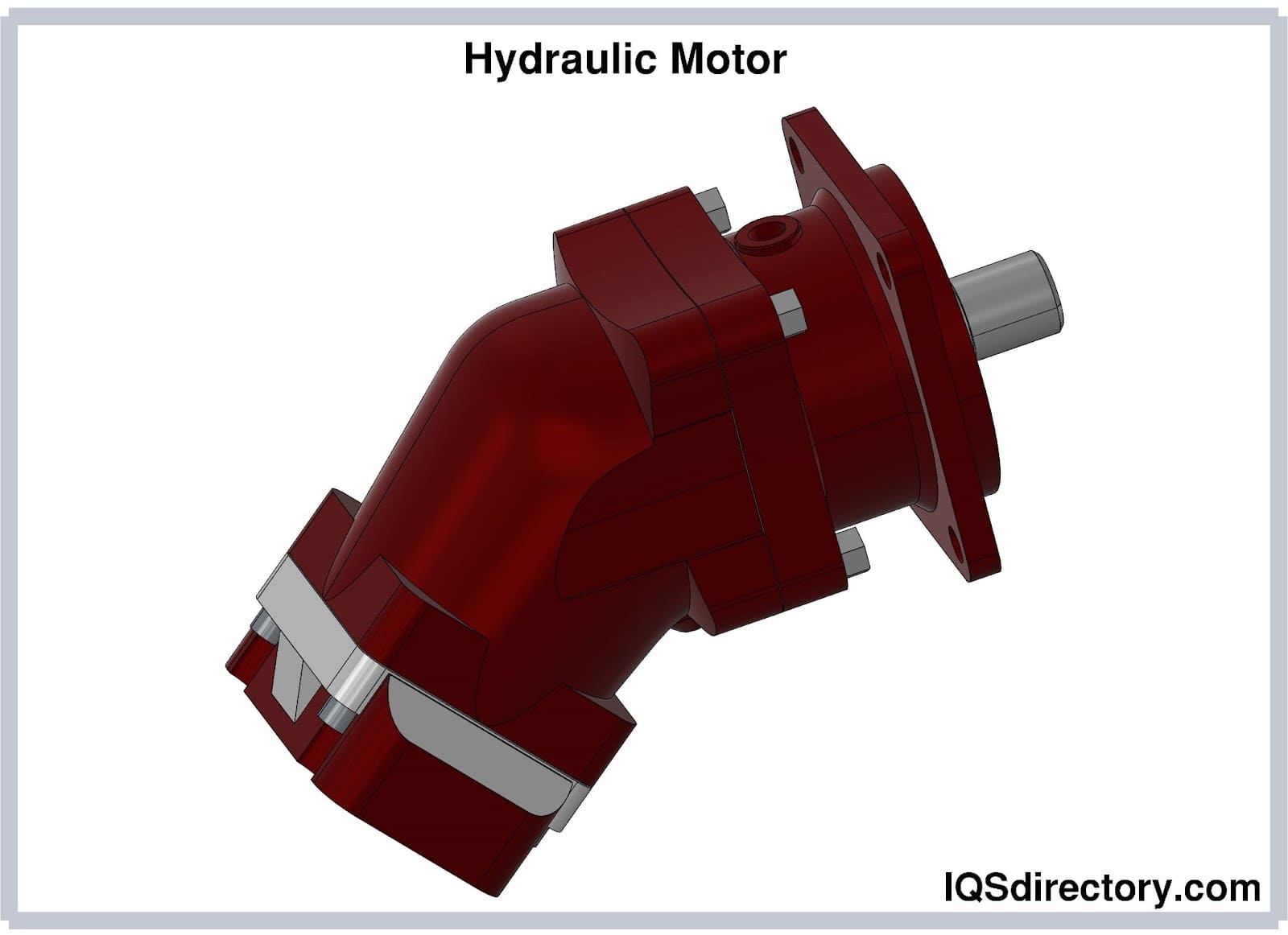
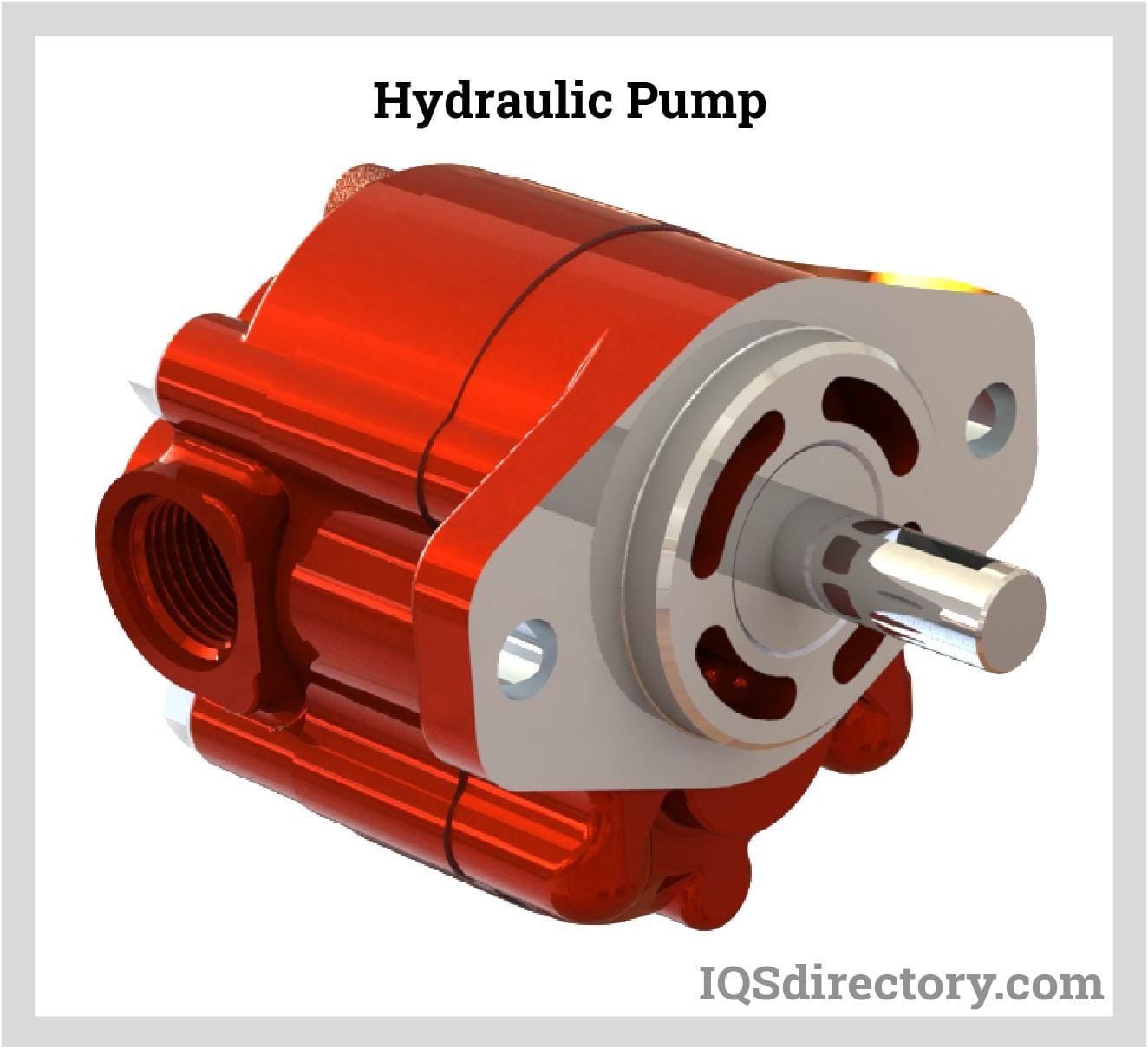
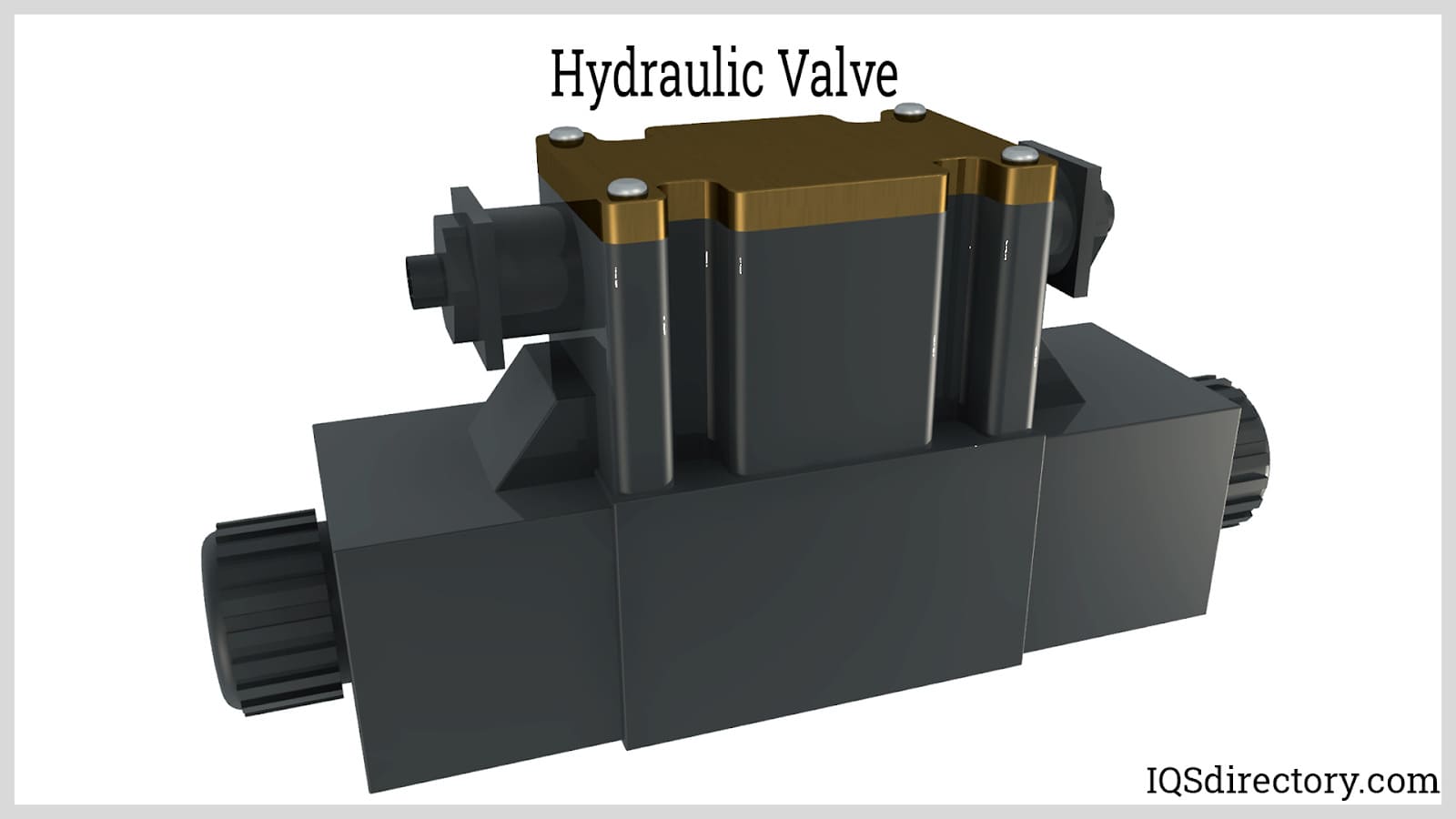
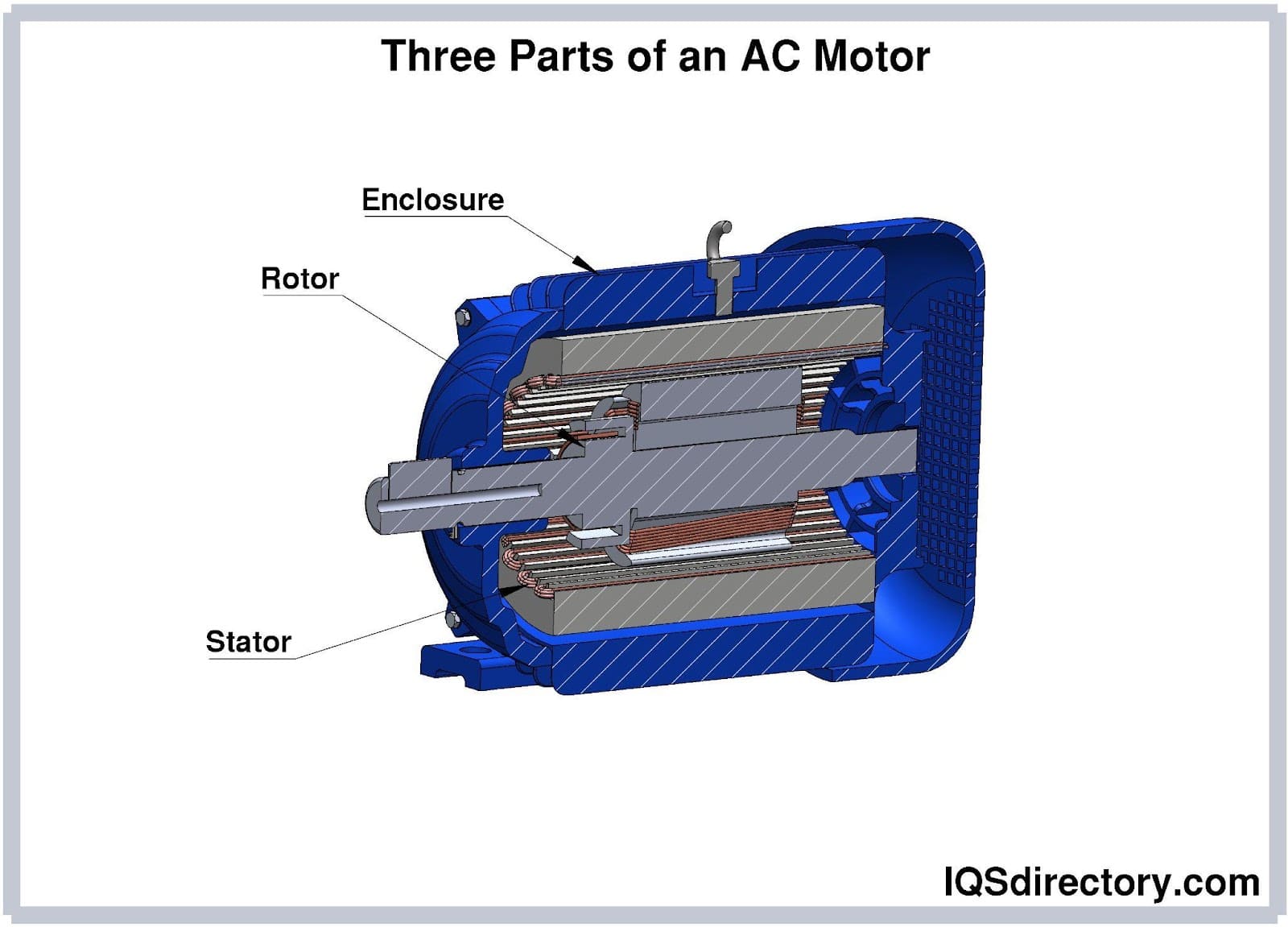
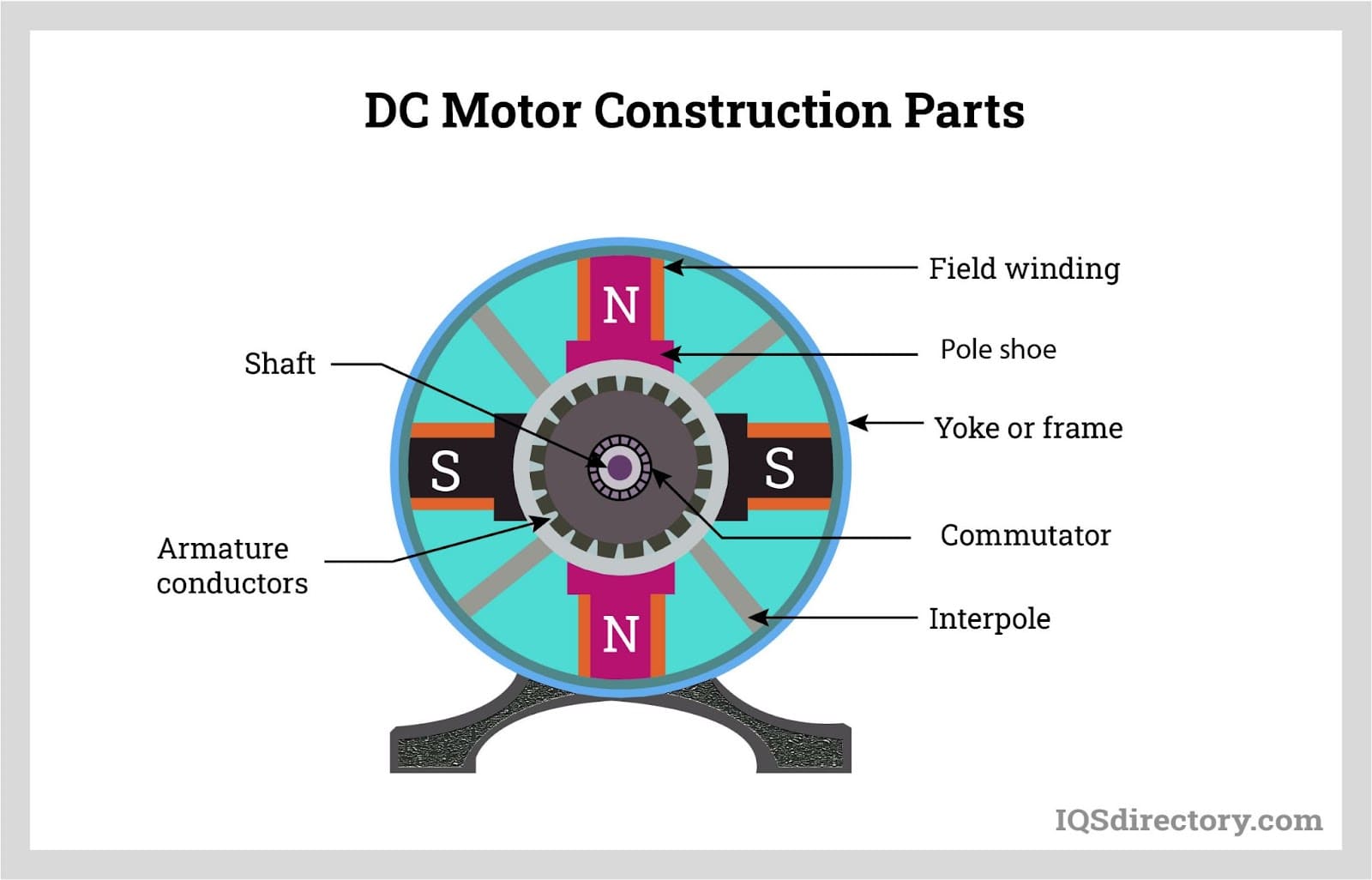

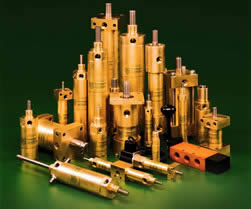 Hydraulic Cylinders
Hydraulic Cylinders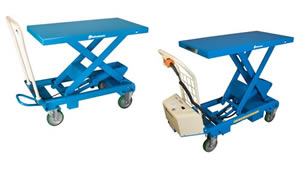 Hydraulic Lifts
Hydraulic Lifts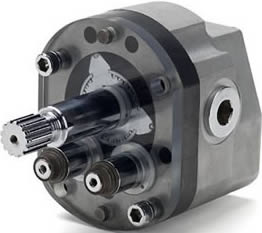 Hydraulic Motors
Hydraulic Motors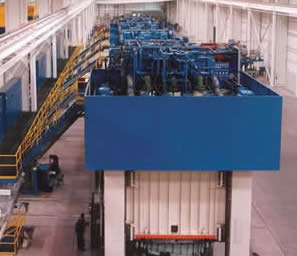 Hydraulic Presses
Hydraulic Presses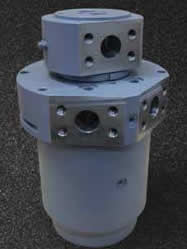 Hydraulic Pumps
Hydraulic Pumps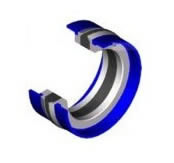 Hydraulic Seals
Hydraulic Seals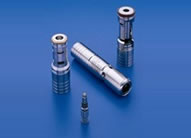 Hydraulic Valves
Hydraulic Valves Castings & Forgings
Castings & Forgings Bulk Material Handling
Bulk Material Handling Electrical & Electronic Components
Electrical & Electronic Components Flow Instrumentation
Flow Instrumentation Hardware
Hardware Material Handling Equipment
Material Handling Equipment Metal Cutting Services
Metal Cutting Services Metal Forming Services
Metal Forming Services Metal Suppliers
Metal Suppliers Motion Control Products
Motion Control Products Plant & Facility Equipment
Plant & Facility Equipment Plant & Facility Supplies
Plant & Facility Supplies Plastic Molding Processes
Plastic Molding Processes Pumps & Valves
Pumps & Valves Recycling Equipment
Recycling Equipment Rubber Products & Services
Rubber Products & Services